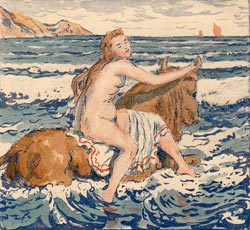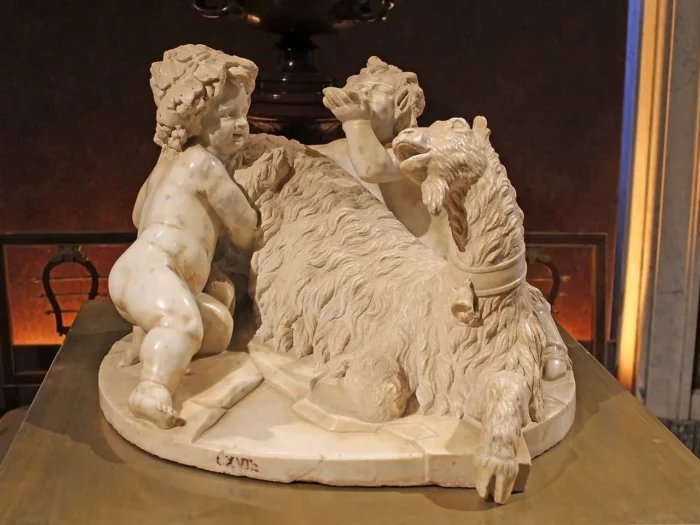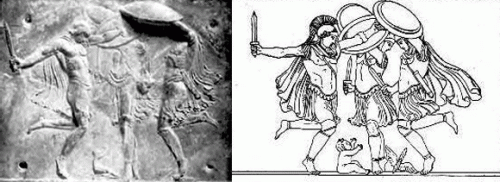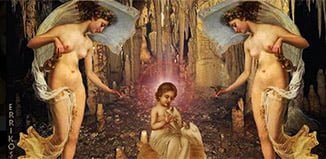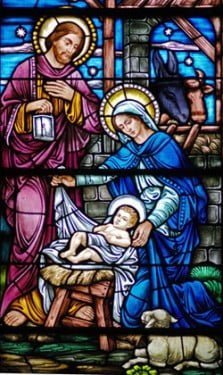Variations of the Myth of Minotaur
The myth of the Minotaur and the Labyrinth has preserved the memory of the unique Minoan civilization until today – a civilization where the bull was worshipped and majestic structures like the Knossos palace existed in all its splendor.
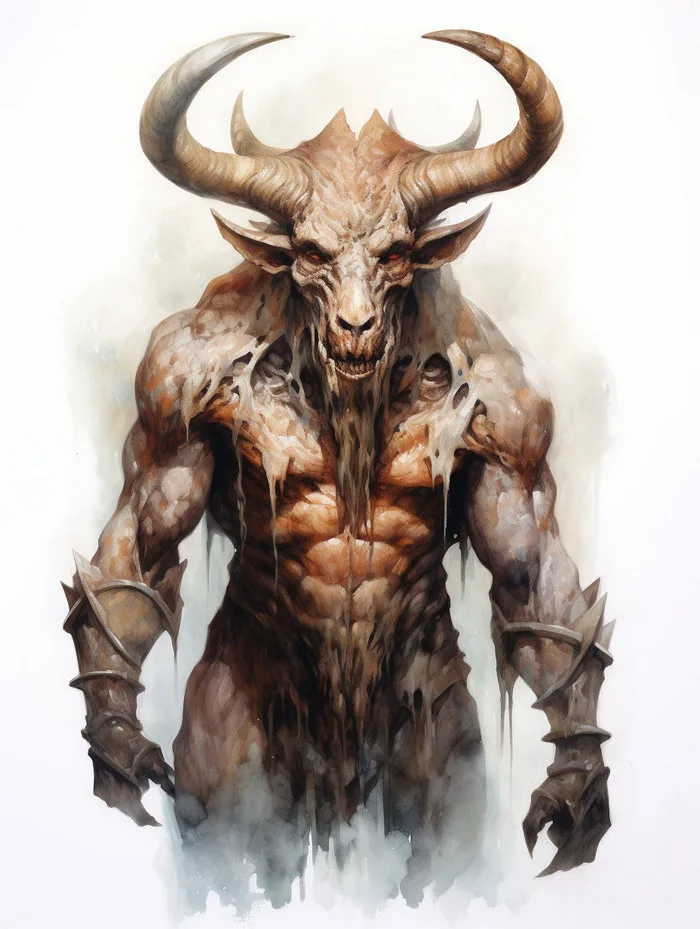
The bull-man Minotaur was depicted in religious ceremonies where the priests wore masks in the shape of a bull’s head.
In the ancient Greek language, the word Labyrinth means “the house of lavrys.” The lavrys is the double-edged axe – one of the basic sacred symbols of the Minoan religion. Usually interpreted as an astro-solar symbol, the lavrys is etched on many sculptured stones in Minoan palaces and other buildings, as well as on vases, pots, and various other works.
Following are several variations of the myth of the Minotaur and the Labyrinth. The first one is also the best known. These variations, with three separate rationalized interpretations of the myth, were made during the years of the later ancient civilization. You may find it useful to know that Minotaur in Greek is Minotavros = Minos + Tavros / Minos + Bull (the bull of King Minos):
The First Tavros
The first Tavros was a prince from Knossos who marched against Phoenicia, abducted the princess Europe and brought her, together with other captives, to Crete. He took her to the Gortys, united with her, and together had three sons: Minos, Radamanthys and Sarpidon. That particular Tavros is considered the founder of the city of Gortys.
The Second Tavros or Minotaur
The second Tavros, or Minotaur, was Minos’ general, a hard and cruel man who is associated with the horrible blood tribute of the Athenians. In Knossos, the Athenian youths were not killed by Minos or eaten by the Minotaur. Instead, they were given as a prize to the winner of the games which were established in the memory of Prince Androgeos, who was murdered in Athens.
General Tavros was the first winner of those games, and was awarded the prizes. Cruel as he was, he abused those youths and sacrificed them on the altar to honor Androgeos. This Tavros was considered dangerous to Minos’ royal authority. Not only was he mean and calculating, but also he carried on a love affair with Queen Pasiphae while, at the same time, she avoided being intimate with Minos.
Theseus came to Crete to punish the cruel general with the approval of the King Minos, who wanted to rid himself of the annoying and hurtful Tavros. Minos helped Theseus kill the Tavros, and, in gratitude, the King gave Theseus his daughter, Ariadne, as his wife.
The Third Tavros
The third Tavros was a young man of incredible beauty from the King’s escort with whom Pasiphae fell in love. She had sexual relations with him during a time when King Minos suffered from a venereal disease and, consequently, could not couple with Pasiphae. The child born from this relationship had Tavros as his father.
When King Minos (Minoas) found out about the child, he refused to have it killed. They named it Minotaur (Minotavros in Greek, a combination of names from his natural and adopted fathers), and the King sent the newborn to the mountain to be raised by the shepherds.
He grew to become a wild man, and wouldn’t obey the shepherds. Minoas ordered his arrest, but he escaped and hid in a cave, where he could sleep at bay and annihilate all those who were sent to capture him.
The Minotaur never ventured outside the cave, and animals were sent in to him for food. Also, Minos would send in convicted criminals to be killed as punishment. It was for this reason that Theseus was sent into the cave. However, at the last minute Ariadne provided Theseus with a sword, which he used to finally kill the Minotaur.
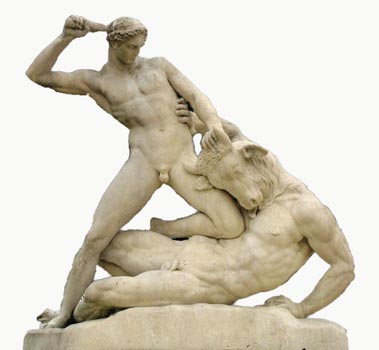
In all these myths the common denominator is that the Minotaur, man or beast, lives or hides in the Labyrinth. Initially, the Labyrinth was associated with Knossos. However, as time passed, some writers and foreign travelers identified the true Labyrinth as being a maze-like cave in Messara, in the Gortys area south of Heraklion.
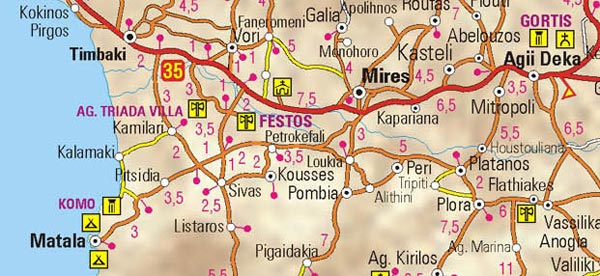
NOTE. In Greek the word labyrinth is “o lavirinthos” (male) but this specific cave in Messara is known as “i lavirinthos” (female).

Paul Faure mentions that all governors of Crete, during the Venetian occupation from the 14th to the 17th century, saw it as their obligation to visit a large quarry located in Ambelouzos, between Gortys and Kasteli, because they believed that’s where the Labyrinth existed. During different periods of the last century, this cave was used by people who lived in the surrounding area as a refuge during war-time persecution.
During World War 2, a section of it was used as a warehouse for German munitions. The German army forced the locals to build storage areas inside the cave to house the guns and ammunition. Also, the people were made to maintain the arsenal. The munitions being housed there were on their way to Egypt, via the Tympaki airport, to strengthen the army of Field Marshall Rommel.
Tympaki also had its own tragic story during the Second World War. In the middle of the night, as Tympaki was being bombed and destroyed by the German Air Force, its residents abandoned their homes, loaded all they could carry onto animals and sought refuge in neighboring villages. Then, the local villagers were forced to build a German airport with stones from their own ravaged homes.
When the Germans were preparing to depart from Crete, the Labyrinth was blown up so its contents would not fall into the hands of the Greek army. Due to this horrendous explosion, the Labyrinth entrance was destroyed and altered, with entire chambers wiped out. The stone structure was weakened to such an extent that its total collapse is a constant and very real threat.
NOTE. This story comes from the book “The Labyrinth of Messara” by Kaloust Paragamian and Antonis Vasilakis.
© explorecrete.com All Rights Reserved. Reproduction or copying without permission is prohibited.

